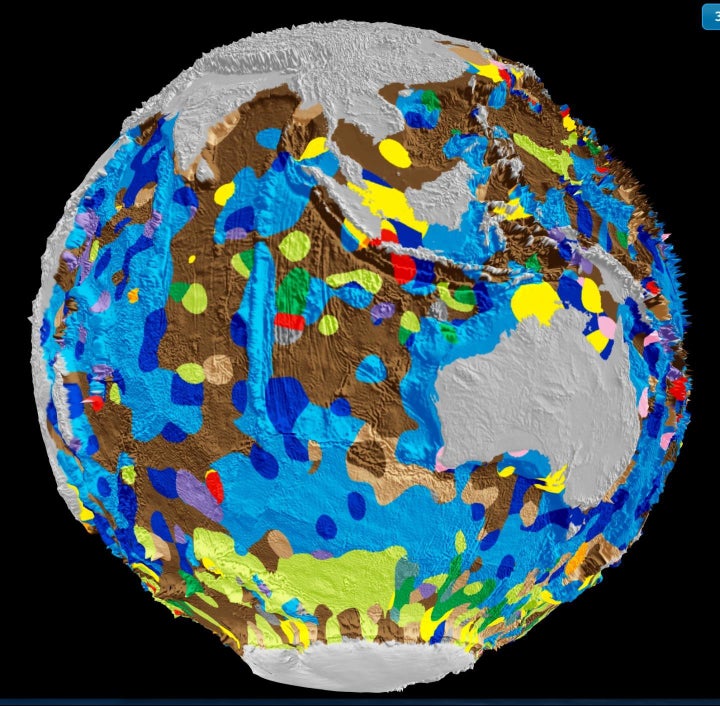
This is a still shot of a digital map of the seafloor's geology.
You've never seen our planet quite like this before.
Researchers in Australia have mapped the Earth's seafloor in unprecedented detail. The digital map -- published online in the journal Geology on August 5, 2015 -- shows an ocean-less Earth that's color-coded with 13 hues to indicate different geological features, such as yellow for sand, red for volcanic rock, and pink for shells and coral, The Sydney Morning Herald reported.
And it's a real eye-opener.
"Our new map brings out the enormous ecological and geological complexity of the seafloor that before we had no idea about," Dr. Dietmar Muller, a geophysicist at the University of Sydney in Australia and co-author of a paper detailing the map, told the newspaper.
Of course, there are other detailed maps of Earth's seafloor. But this is the most up-to-date digital map, based on 40 years of data. Until now, the most recent map we had of the seafloor was drawn by hand in the 1970s.
To create the new map, the researchers analyzed about 15,000 seafloor samples collected over the past half-century by research ships from all around the world. The researchers then used an artificial intelligence technique called "support vector machine" to build the digital map based on their analyses.
The map is beautiful -- but that's not all. The researchers say it sheds light on the global distribution of seafloor sediments and gives new insights into the effects of climate change.
"In order to understand environmental change in the oceans we need to better understand what is preserved in the geological record in the seabed," Dr. Adriana Dutkiewicz, a sedimentologist at the university and lead author of the paper, said in a written statement. "The deep ocean floor is a graveyard with much of it made up of the remains of microscopic sea creatures called phytoplankton, which thrive in sunlit surface waters. The composition of these remains can help decipher how oceans have responded in the past to climate change."
What lurks beneath our planet's seafloor? Check out the "Talk Nerdy To Me" episode below for a journey to the center of the Earth.
